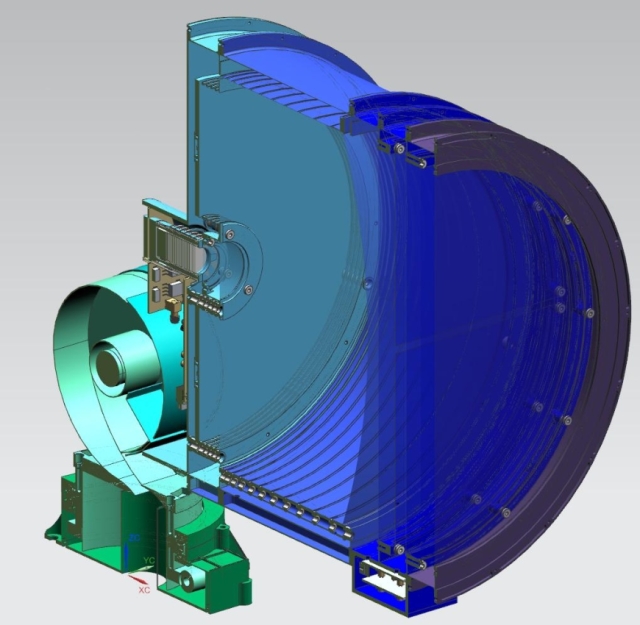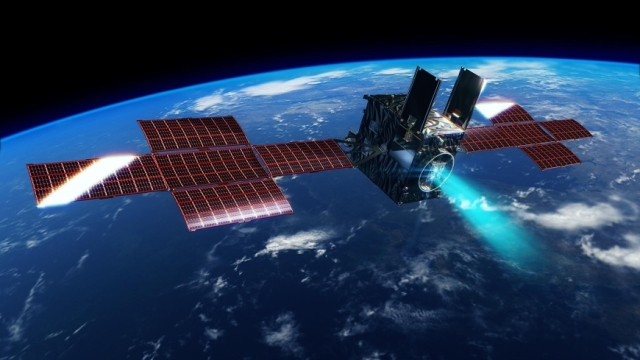The aerospace agencies of Germany and Japan (DLR and JAXA) agreed in 2024 to send a joint mission to the asteroid Phaethon DESTINY+, the main task of which will be to study space dust — both along the flight path and in the vicinity of the destination, the [...] DLR said. The device is designed to help scientists answer the question: whether cosmic dust particles can serve as carriers of organic molecules and what role they could play in the origin of life on Earth, as well as what part of this dust is of galactic origin.
Japan has already carried out two asteroid research missions: the Hayabusa probe in 2010 delivered 1,500 soil particles from the Itokawa asteroid to scientists, and Hayabusa-2 is now carrying samples from the Ryugu asteroid to Earth. The new mission continues the program of research of primordial objects of the Solar system, asteroids, the substance of which has remained almost unchanged since the formation of the Solar system.
The destination of THE destiny+ spacecraft is the asteroid Phaethon . Its orbit is similar to that of a comet, and it also recorded dust emissions, which allowed astronomers to classify it as a stony comet devoid of volatiles. Phaethon is also notable for being the mother body for one of the most powerful meteor showers known to astronomers, the Geminid meteor shower, which peaks in mid — December.
The destiny+ probe (Demonstration and Experiment of Space Technology for INterplanetary voYage with Phaethon fLyby and dUst Science) is very similar in configuration to the Hayabusa. This is a 400-kilogram device with solar panels with a span of more than 12 meters. Like the Hayabusa-2, it is equipped with hydrazine orientation engines, as well as ion engines with a thrust of 40 millinewtons, which use xenon as the working fluid (its reserve is 60 kilograms).

Destiny+device diagram
Image source: JAXA
The spacecraft is expected to be launched in mid-2024 using the Japanese Epsilon-S light solid-fuel launch vehicle from the Utinoura cosmodrome. After launching, DESTINY+ will gradually raise its orbit on ion engines for several months, after which it will perform a gravity maneuver near the moon and go on a flight to Phaethon, which will take about four years. At the moment of approach, the distance to Earth will be approximately 1.7 astronomical units, the device will fly at a distance of about 500 kilometers from the asteroid with a relative speed of 33 kilometers per second. In about a year, it will return to Earth, where it will be able to perform another gravitational maneuver and go to another goal, which has not yet been determined.
The main scientific instrument on Board the probe is the German DDA (DESTINY+ Dust Analyzer) instrument, the successor to the CDA (Cassini Cosmic Dust Analyzer) instrument that worked on Board the Cassini. This is a cosmic dust catcher that can accurately determine the trajectory of dust particles, their mass, speed — that is, determine their origin, for example, whether there are particles that have entered the Solar system from galactic space. In addition, the device will be able to study the chemical composition of particles, that is, to detect the presence of organic substances, as well as carbon, phosphorus and a number of other elements.

DDA device in the section
Image source: DLR
The device will work during the entire flight. As expected, in the vicinity of Phaethon must be present its own particles, that is, the device will be able to explore the substance of the asteroid. In addition, the device will help scientists check whether space dust, 40 thousand tons of which falls to Earth every year, can serve as a transport for organic substances, learn more about the primary matter of the Solar system and meteor showers. There will also be two cameras on Board — TCAP (Telescopic Camera for Phaethon) and MCAP (Multiband Camera for Phaethon), which will take pictures of the Phaethon's surface and examine its composition.
You can read about the origin and history of studying meteor showers in our article " Dust of comet roads», and about how galactic dust gets into the Solar system-in the material " Interstellar Express» .
Sergey Kuznetsov
